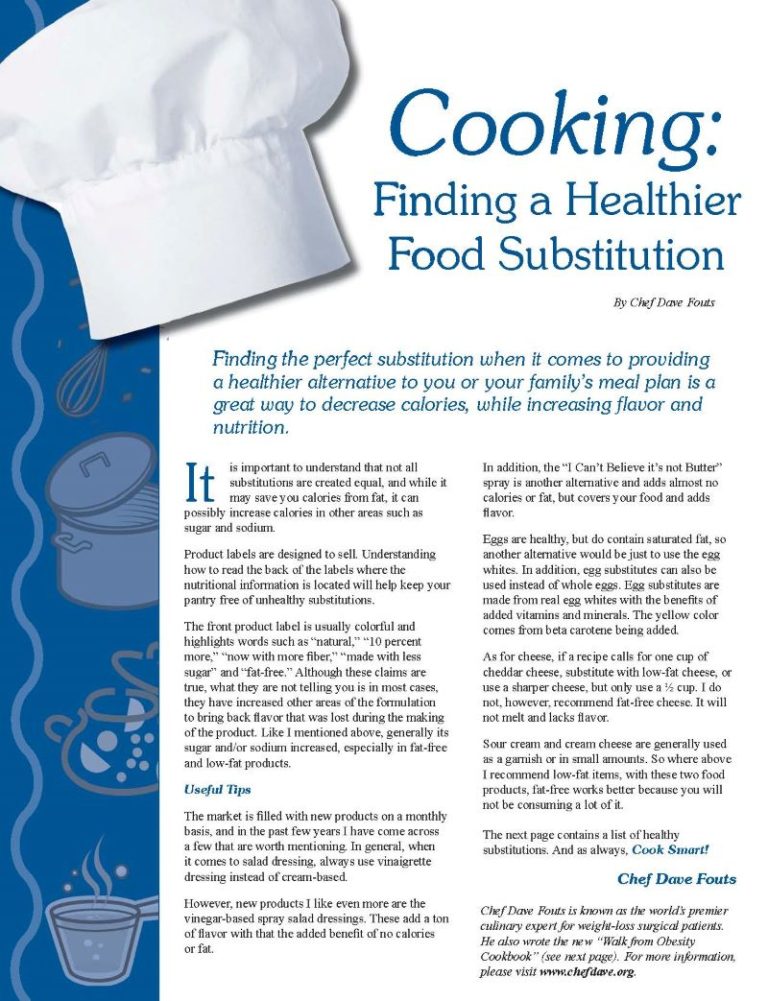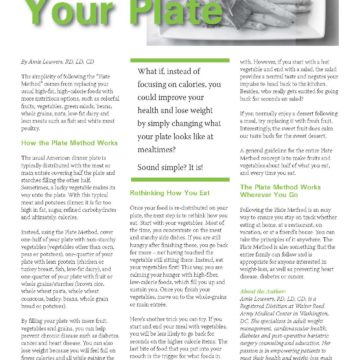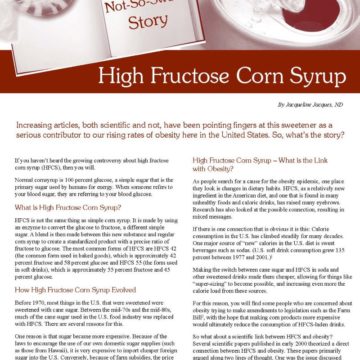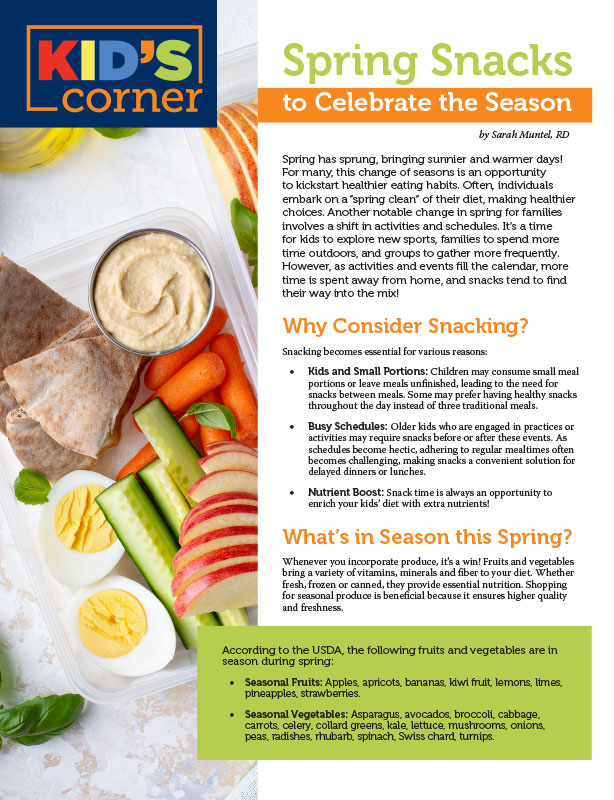Cooking: Finding a Healthier Food Substitution


by Chef Dave Fouts
Spring 2008
Finding the perfect substitution when it comes to providing a healthier alternative to you or your family’s meal plan is a great way to decrease calories, while increasing flavor and nutrition.
It is important to understand that not all substitutions are created equal, and while it may save you calories from fat, it can possibly increase calories in other areas such as sugar and sodium.
Product labels are designed to sell. Understanding how to read the back of the labels where the nutritional information is located will help keep your pantry free of unhealthy substitutions.
The front product label is usually colorful and highlights words such as “natural,” “10 percent more,” “now with more fiber,” “made with less sugar” and “fat-free.” Although these claims are true, what they are not telling you is in most cases, they have increased other areas of the formulation to bring back flavor that was lost during the making of the product. Like I mentioned above, generally its sugar and/or sodium increased, especially in fat-free and low-fat products.
Useful Tips
The market is filled with new products on a monthly basis, and in the past few years I have come across a few that are worth mentioning. In general, when it comes to salad dressing, always use vinaigrette dressing instead of cream-based.
However, new products I like even more are the vinegar-based spray salad dressings. These add a ton of flavor with that the added benefit of no calories or fat. In addition, the “I Can’t Believe it’s not Butter” spray is another alternative and adds almost no calories or fat, but covers your food and adds flavor.
Eggs are healthy, but do contain saturated fat, so another alternative would be just to use the egg whites. In addition, egg substitutes can also be used instead of whole eggs. Egg substitutes are made from real egg whites with the benefits of added vitamins and minerals. The yellow color comes from beta carotene being added.
As for cheese, if a recipe calls for one cup of cheddar cheese, substitute with low-fat cheese, or use a sharper cheese, but only use a ½ cup. I do not, however, recommend fat-free cheese. It will not melt and lacks flavor.
Sour cream and cream cheese are generally used as a garnish or in small amounts. So where above I recommend low-fat items, with these two food products, fat-free works better because you will not be consuming a lot of it.
Below, please find a list of healthy substitutions. And as always, Cook Smart!
Chef Dave Fouts
Sour Cream Substitutes
Plain low-fat yogurt
Fat-free sour cream
Full-fat Cheese Substitutes
Low-fat, skim-milk cheese
Cheese with less than 5 grams of fat per ounce
Ricotta Cheese Substitutes
Low-fat or cottage cheese
Nonfat or low-fat ricotta cheese
Ground Beef Substitutes
Extra lean ground beef
Lean ground turkey or chicken
Sausage Substitutes
Lean ground turkey
95 percent fat-free sausage
Mayonnaise Alternatives
Low-fat mayonnaise
Sugar Alternatives
Sugar substitute
White Rice Alternatives
Brown rice
Whole barley
Bulgur
Kasha
Quinoa
Whole wheat couscous
Milk/Cream Alternatives
2 % or skim milk
Fat-free half and half
Iceberg Lettuce Alternatives
Romaine lettuce
Endive
Fresh spinach
Field Greens
Butter Alternatives
Low-fat margarine
Spray margarine
Oils Alternatives
Olive oil
Canola oil
Vegetable oil
by Sarah Muntel, RD Spring 2024 Spring has sprung, bringing sunnier and warmer days! For many, this…
Read Articleby Nina Crowley, PhD, RD (with Inspiration from Shawn Cochran) Winter 2024 Dating, no matter your age,…
Read ArticleWith the holidays behind us and 2022 now here, many of us are ready to tackle our…
View Video










